10. Immune System
1/49
Earn XP
Description and Tags
note: this section relates more closely to my biology notes!!
Name | Mastery | Learn | Test | Matching | Spaced |
|---|
No study sessions yet.
50 Terms
Immune System
overall role is to
protect the body from foreign invaders
( ex. bacteria, viruses, fungi )

2 Defense Types of the Immune System?
Innate Defense System
Adaptive Defense System
Innate Defense System
specific?
non-specific?
non-specific
Innate Defense System
is the body’s _______ line of defense against infection
first line of defense
Innate Defense System
includes ______ and ______ barriers
Innate Defense System
includes physical and chemical barriers
Innate Defense System
physical examples?
skin
mucous membranes

Innate Defense System
chemical examples?
stomach acid
enzymes
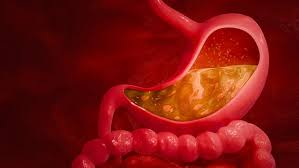
Innate Defense System
what is it’s first response?
Inflammatory Response
Inflammatory Response
what chemical gets released?
Histamine

Histamine
causes
blood vessels to dilate
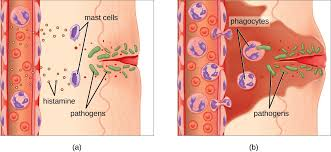
Blood Vessel Dilation
will ________ to the area of infection
increase blood flow to the area of infection
what does increased blood flow allow?
more white blood cells to enter area of infection!
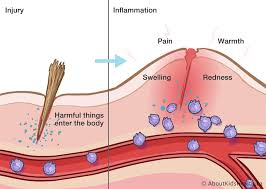
Innate White Blood Cell Type
→ that goes to area of infection?
Phagocytes
Phagocytes
will ______ and _______ the foreign invader
will engulf and digest the foreign invader
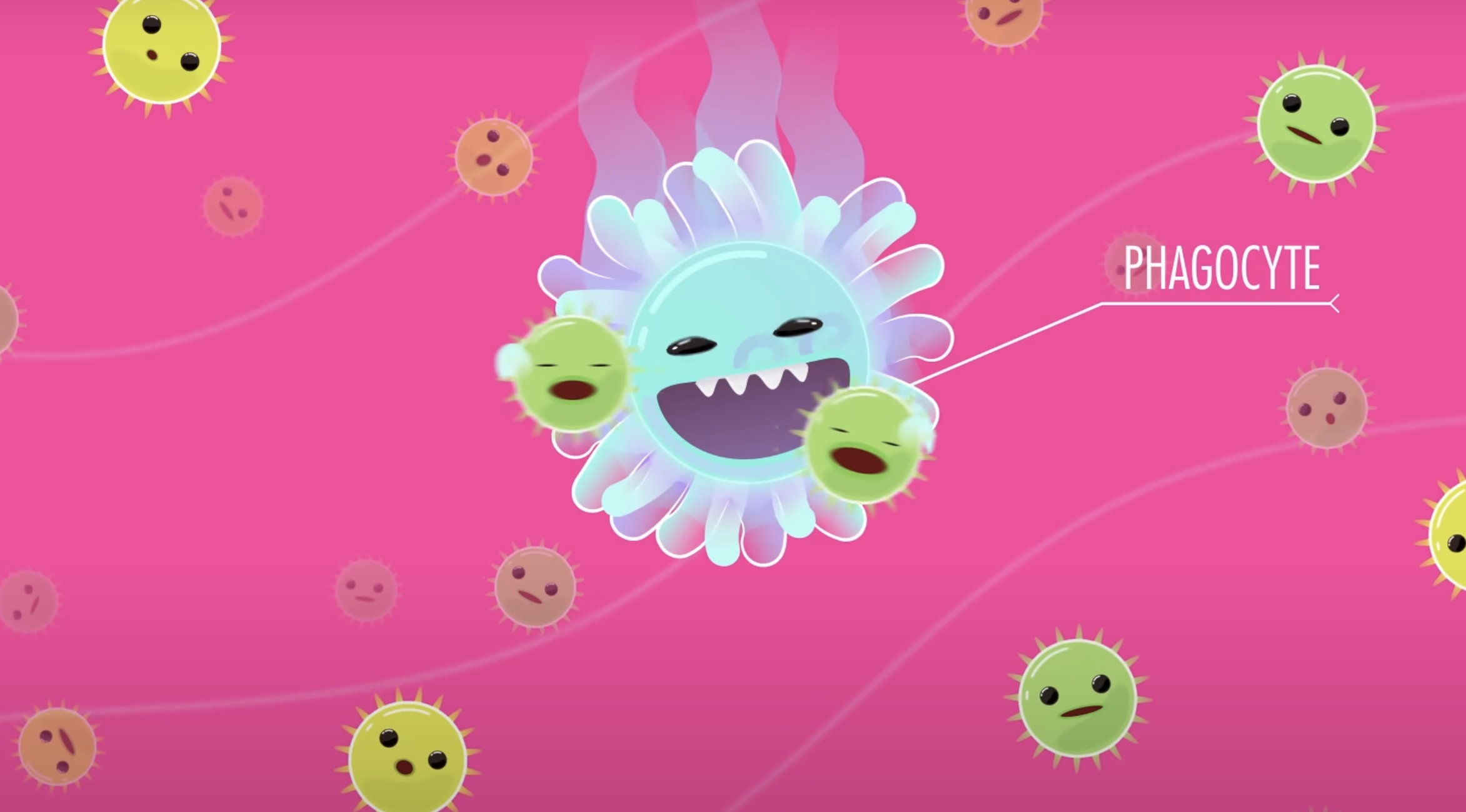
Adaptive Defense System
specific?
non-specific?
specific
Adaptive Defense System
is the body’s _______ line of defense against infection
second line of defense
Adaptive Defense
______ and _______ foreign invaders
detects and destroys specific foreign invaders
Adaptive Defense System
includes?
white blood cells
lymphatic system
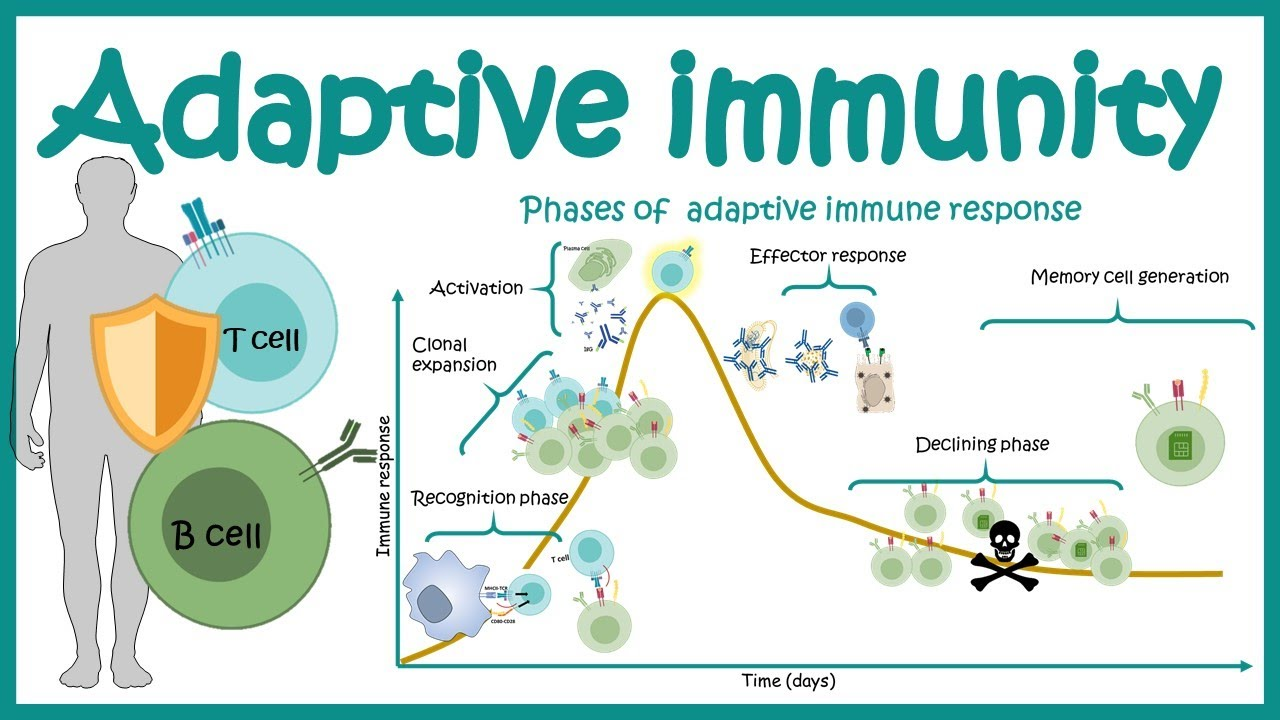
2 Types of Adaptive Immunity?
Cell Mediated Immunity
Humoral Immunity
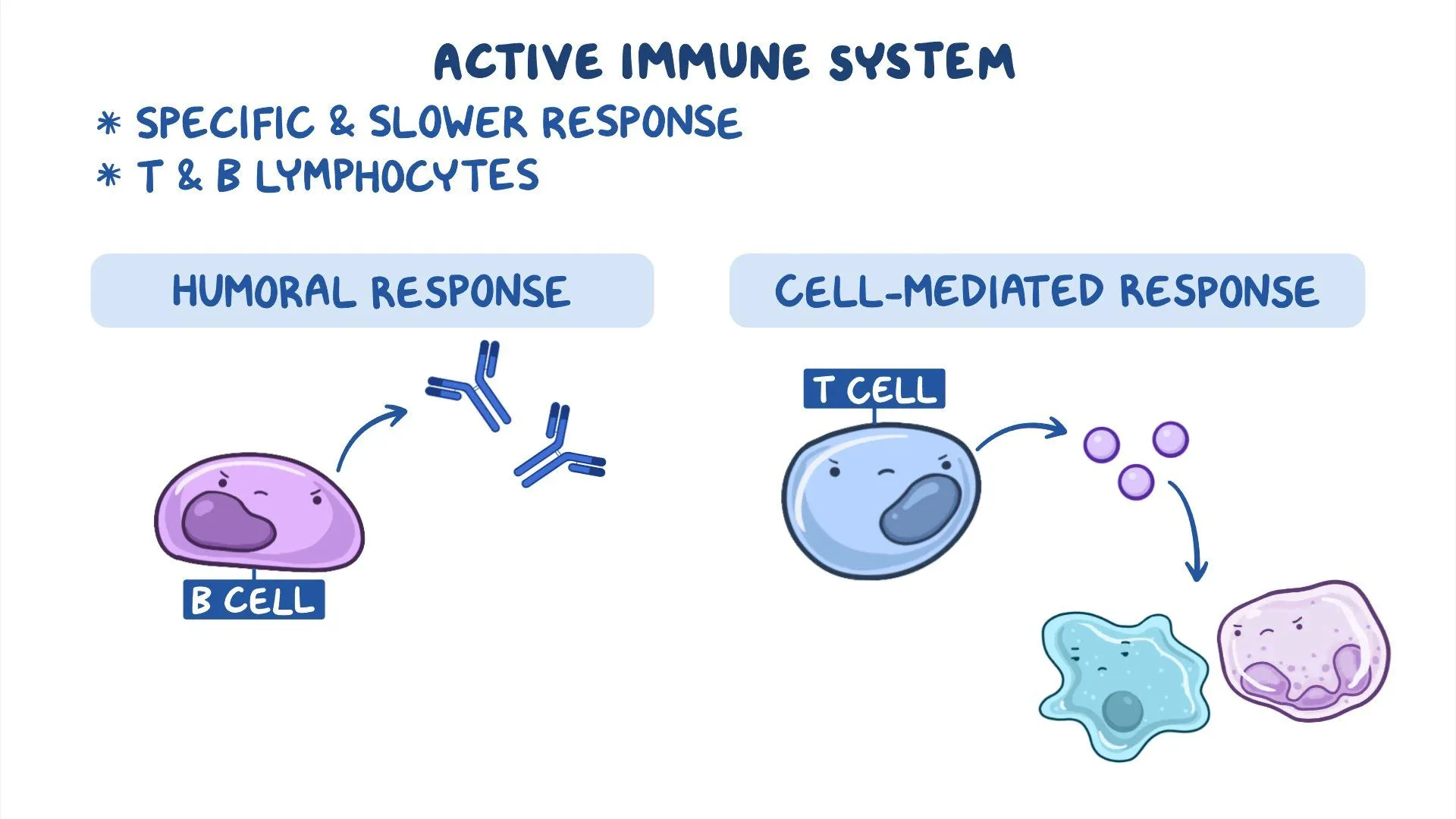
Cell Mediated Immunity
white blood cells involved?
T Cells
Helper T Cells
Cytotoxic ( Killer ) T Cells


Cell Mediated Immunity
Helper T Cell
job?
activate Cytotoxic ( Killer ) T Cells
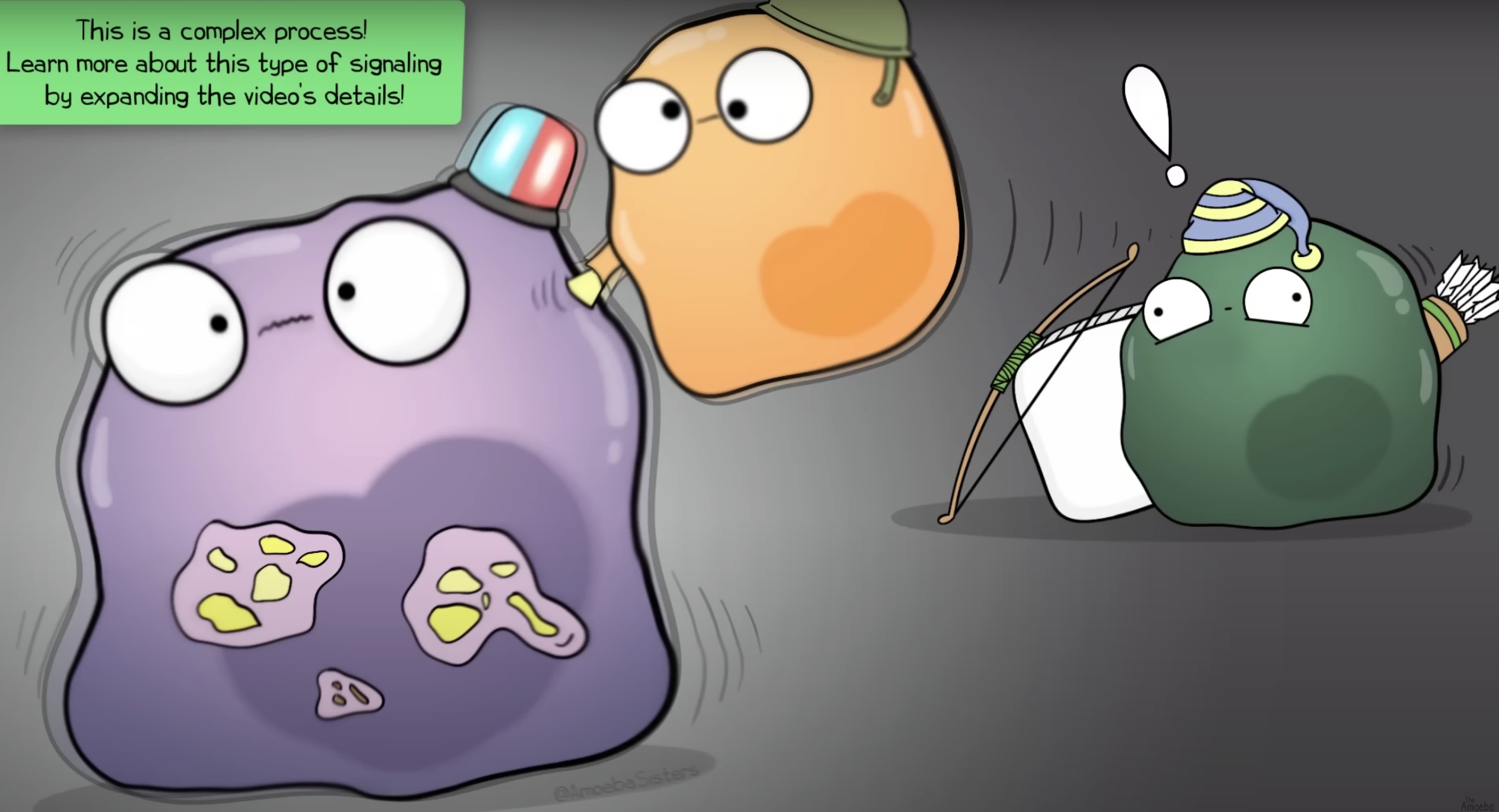
Cytotoxic ( Killer ) T Cell target
infected body cells
Cytotoxic T Cell
will cause targets to do
apoptosis
( programmed cell death )
Humoral Immunity
white blood cells involved?
B Cells
+ Helper T Cells
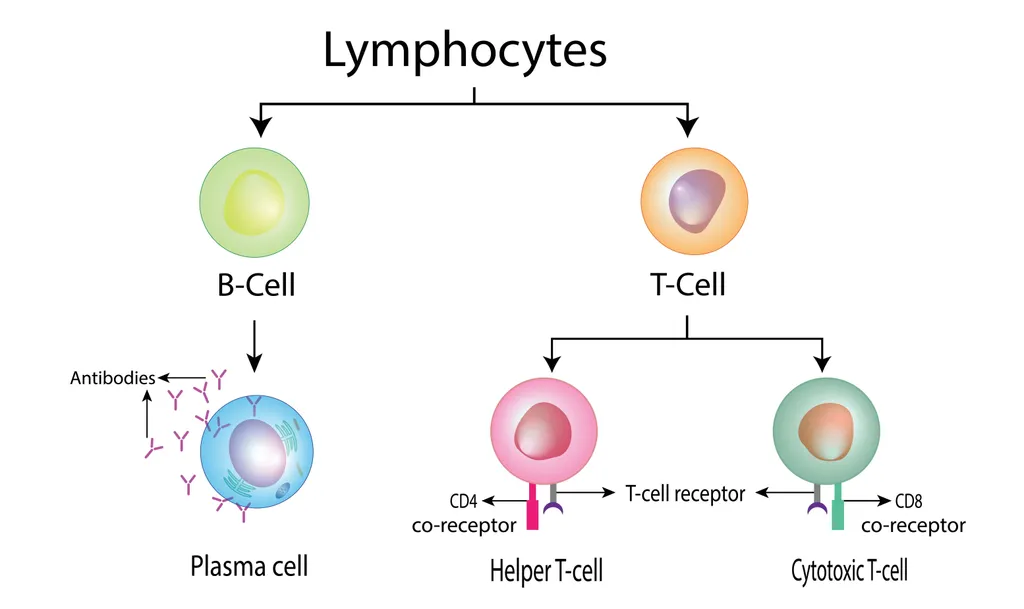
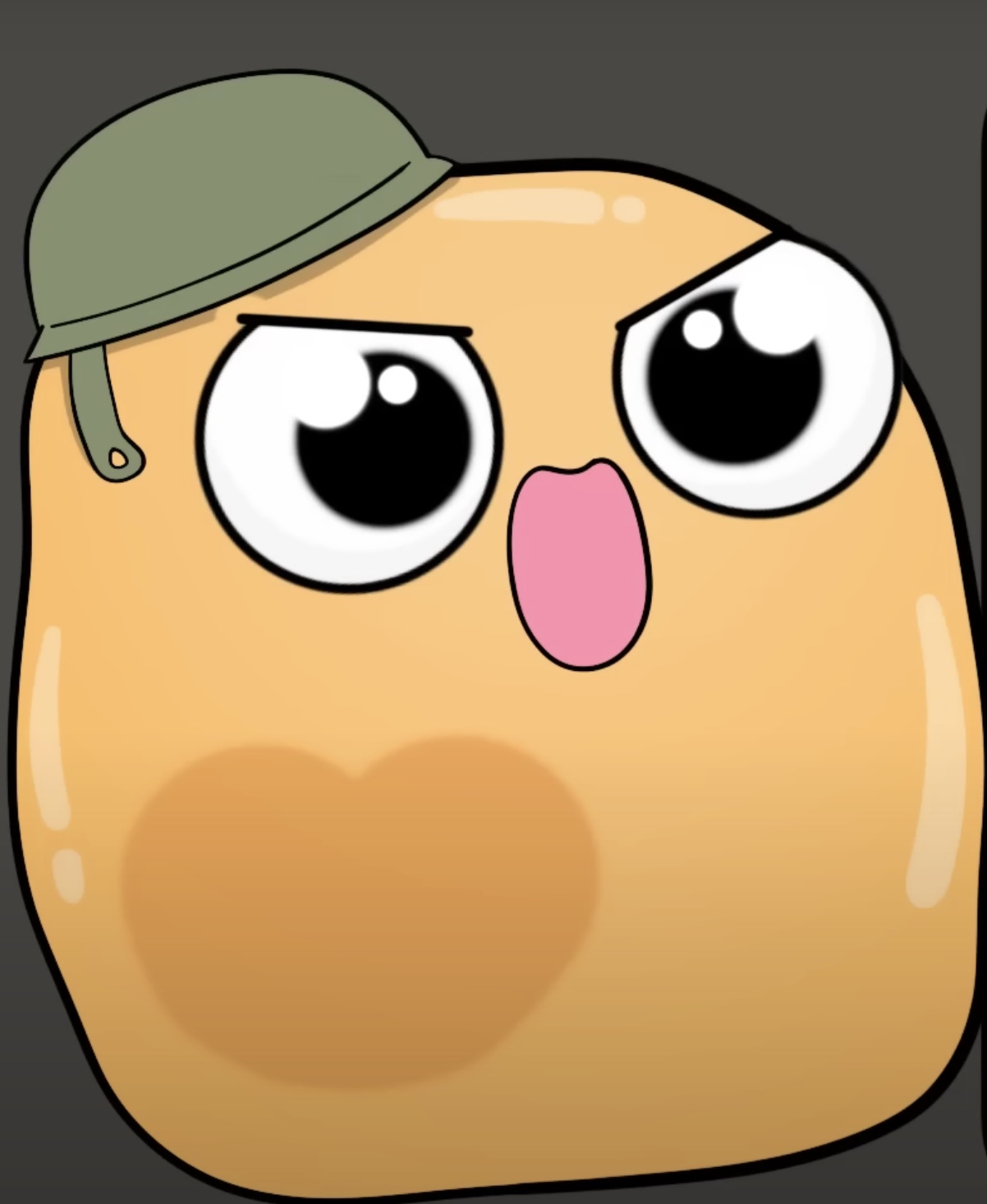
Humoral Immunity
Helper T Cell
job?
activate B Cells
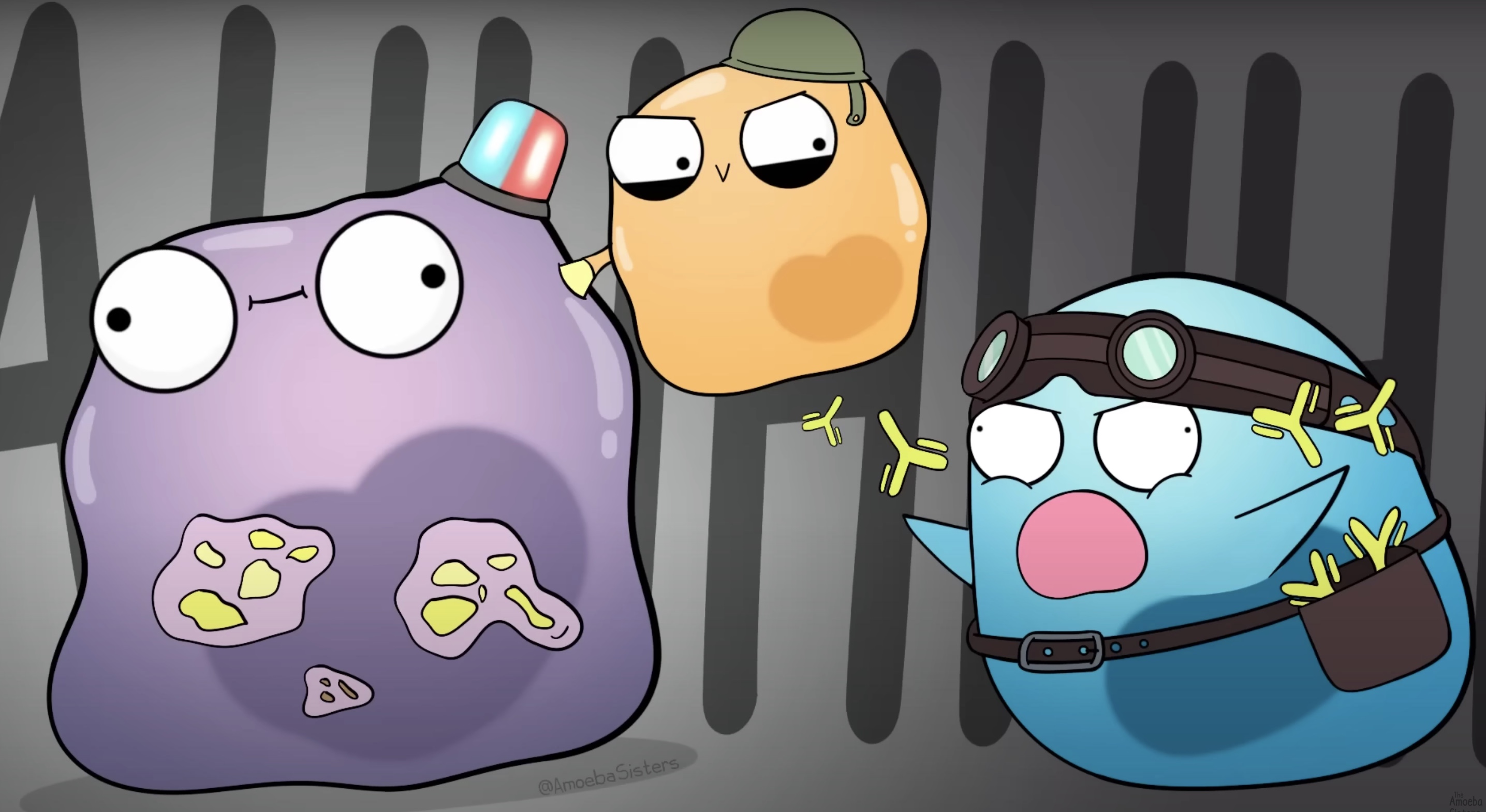
Plasma B Cells
will release
antibodies
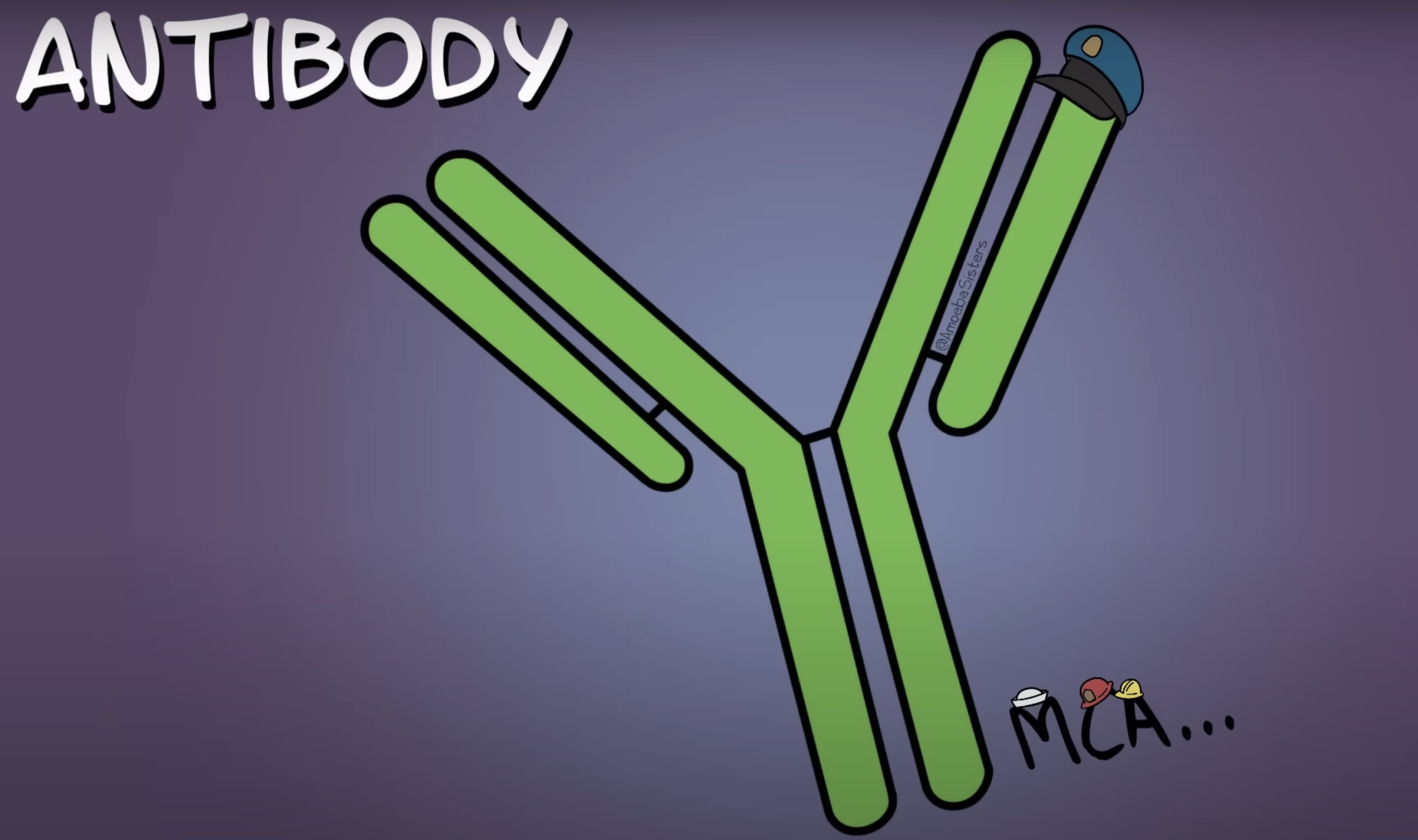
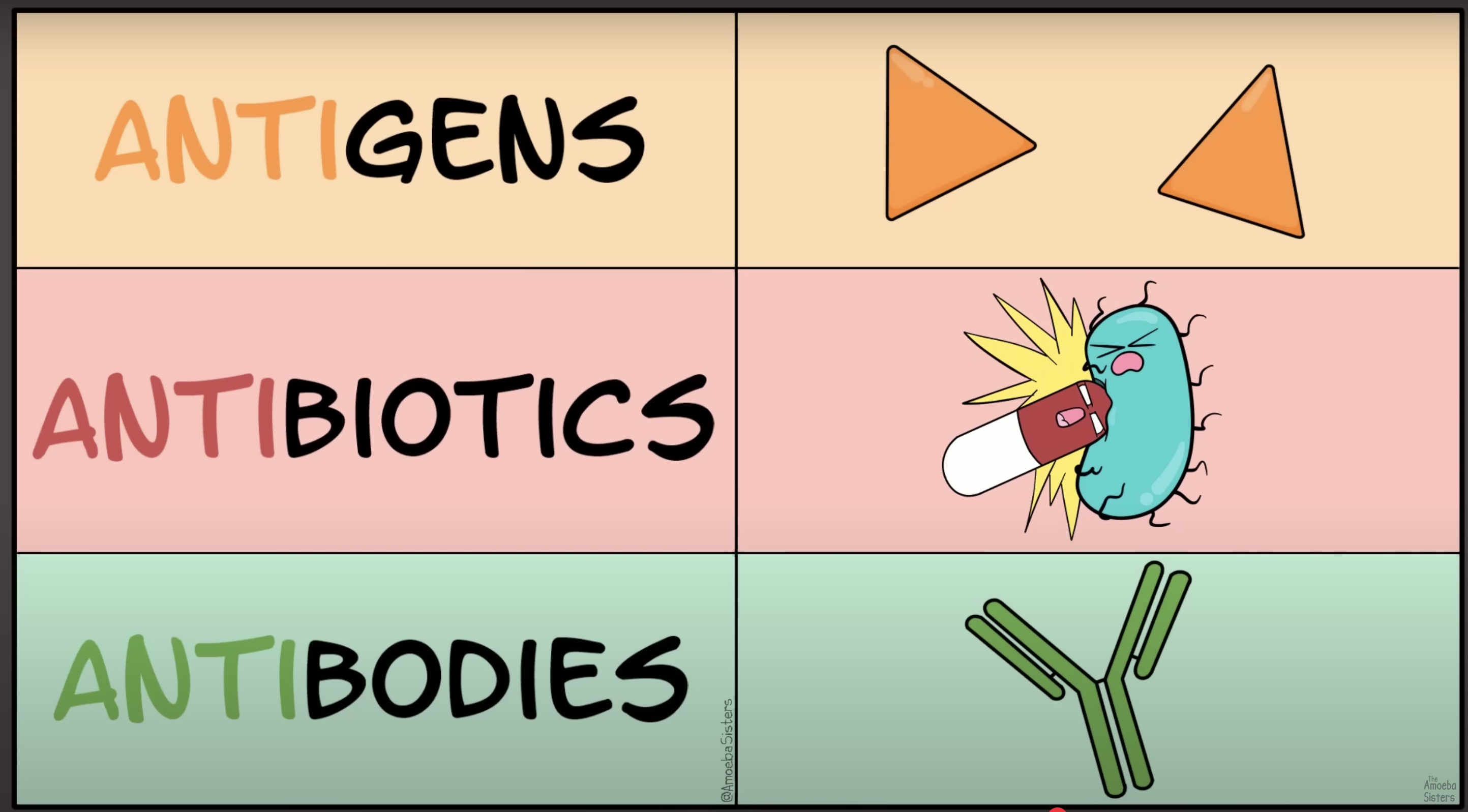
memory tip
antibodies are from our bodies!
antigens are not!
= both are proteins!
Antigens
are
unique protien “markers” on
surface of pathogens
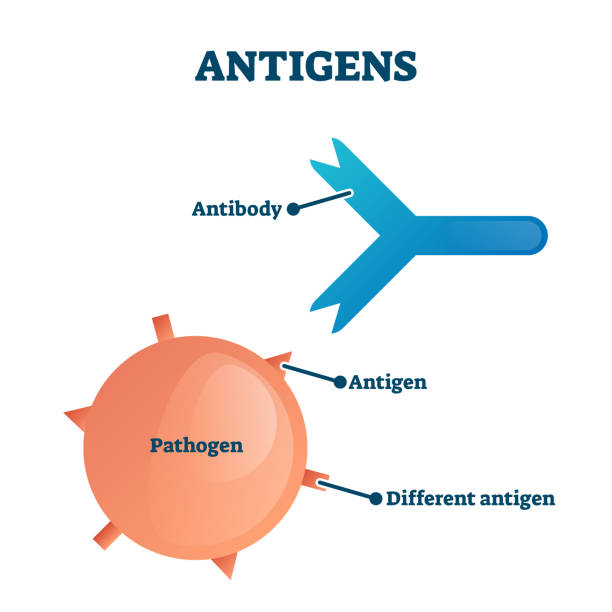
what happens when our body detects antigens?
triggers immune response
Antigen-Presenting Cells
will ______ and ______ the antigen
will engulf and display the antigen ( on their surface )

Main Antigen-Presenting Cells?
Macrophages
( eat to destroy )
Dendritic Cells
( eat to show )
B Cells

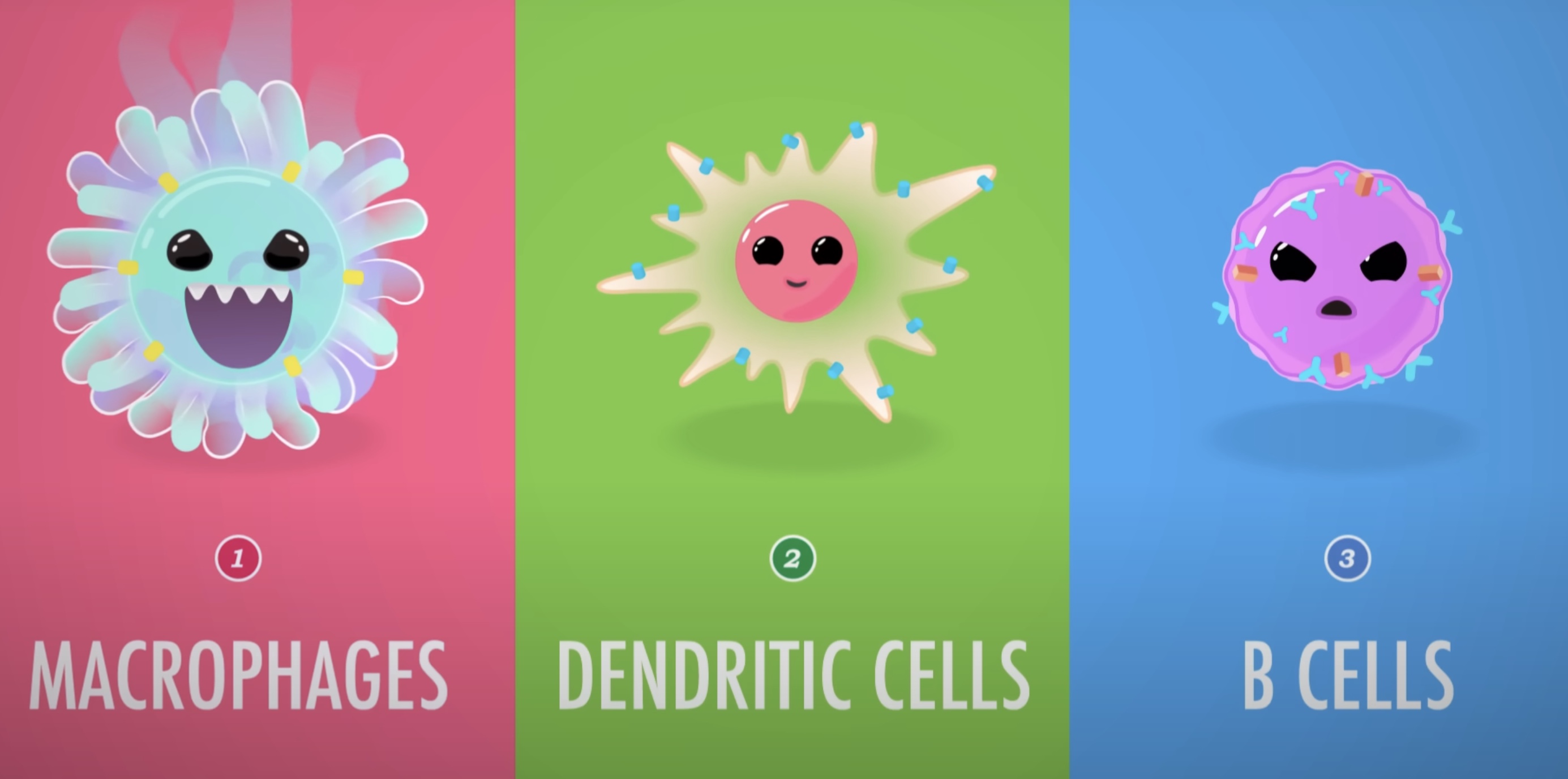
Both
Macrophages
Dendritic Cells
are a TYPE of
phagocyte
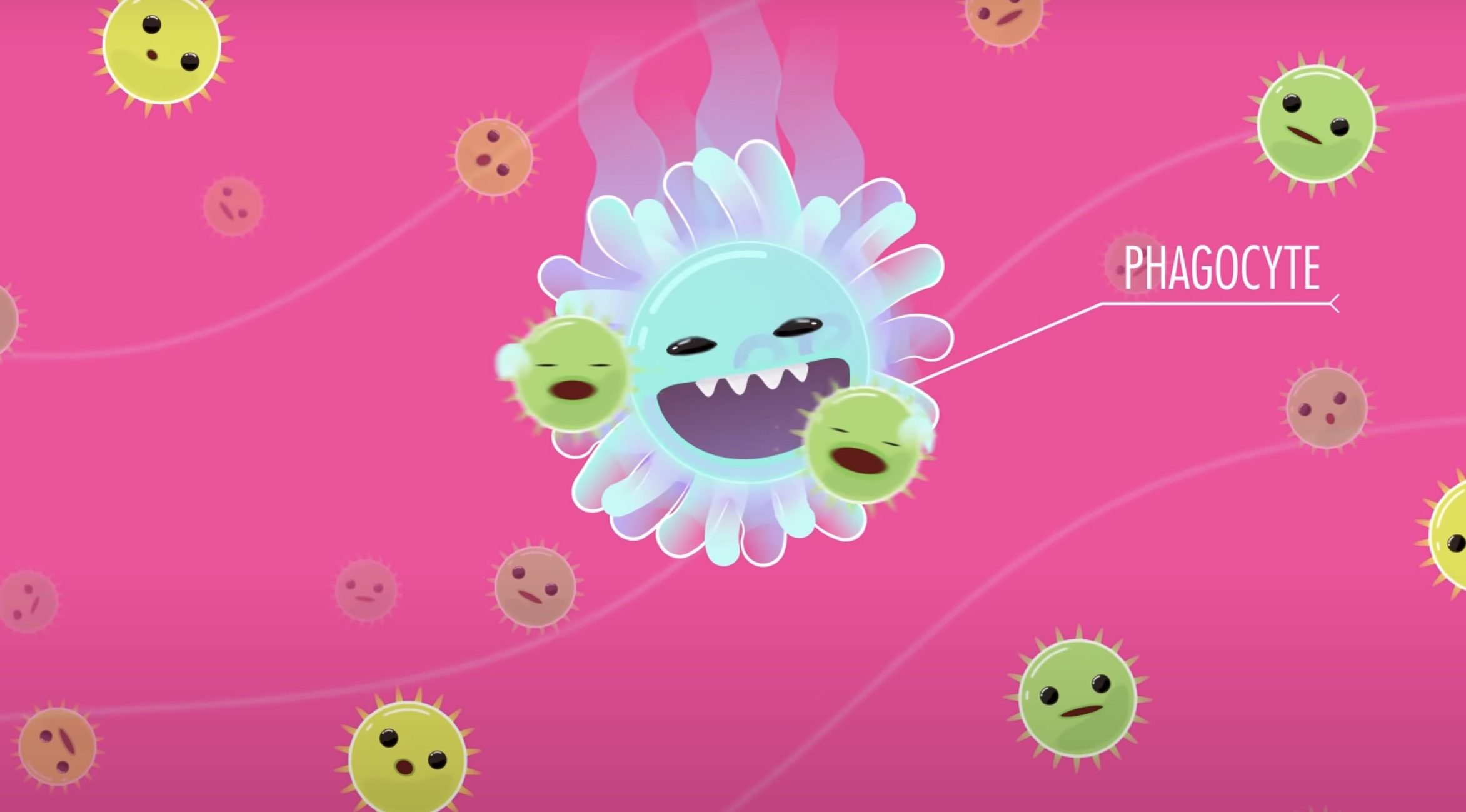
Macrophages
Dendritic Cells
B Cells
will display ______ antigens
MHC class II ( 2 ) Antigens
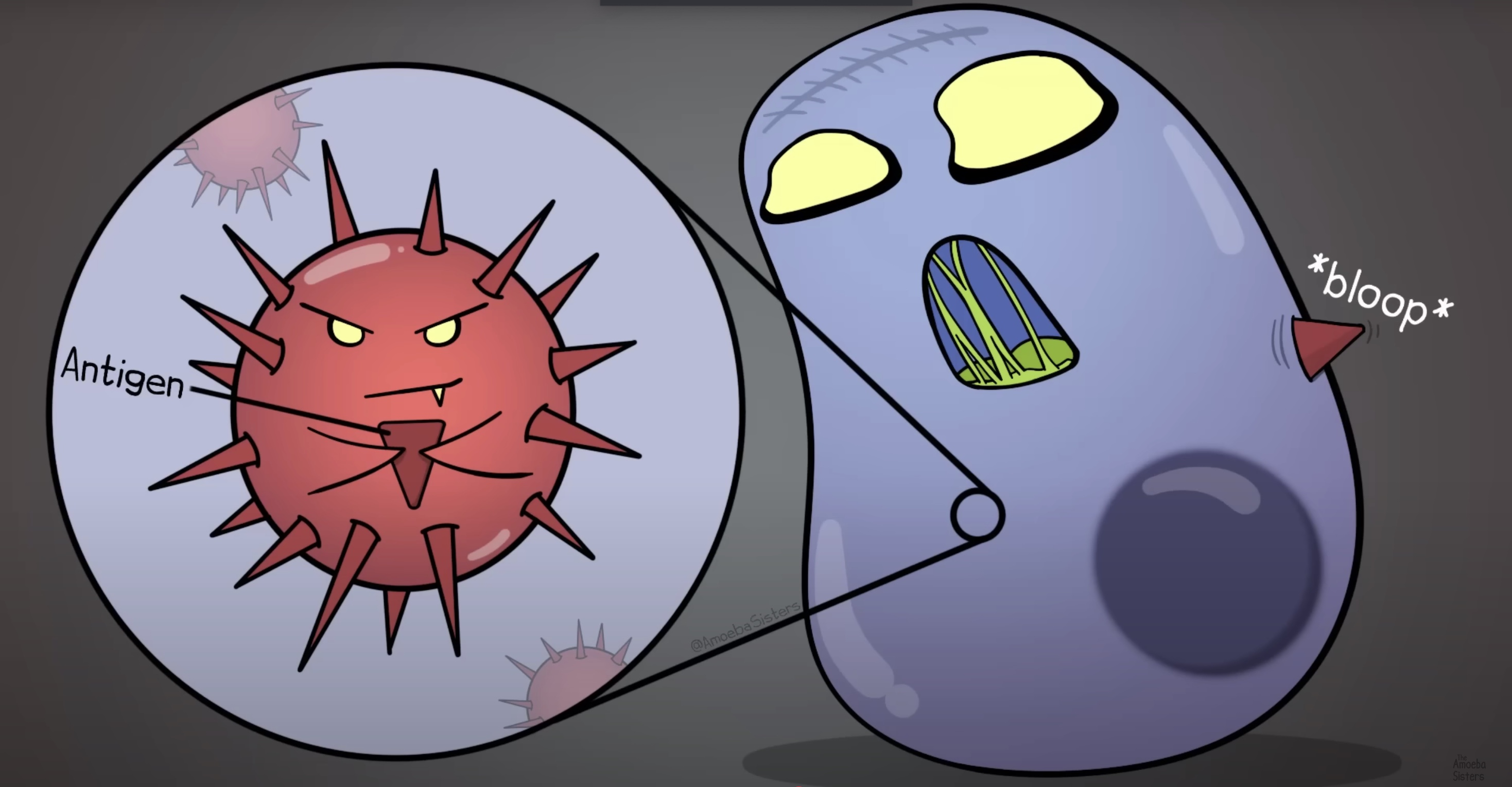
Another Antigen-Presenting Cell?
Infected Body Cells
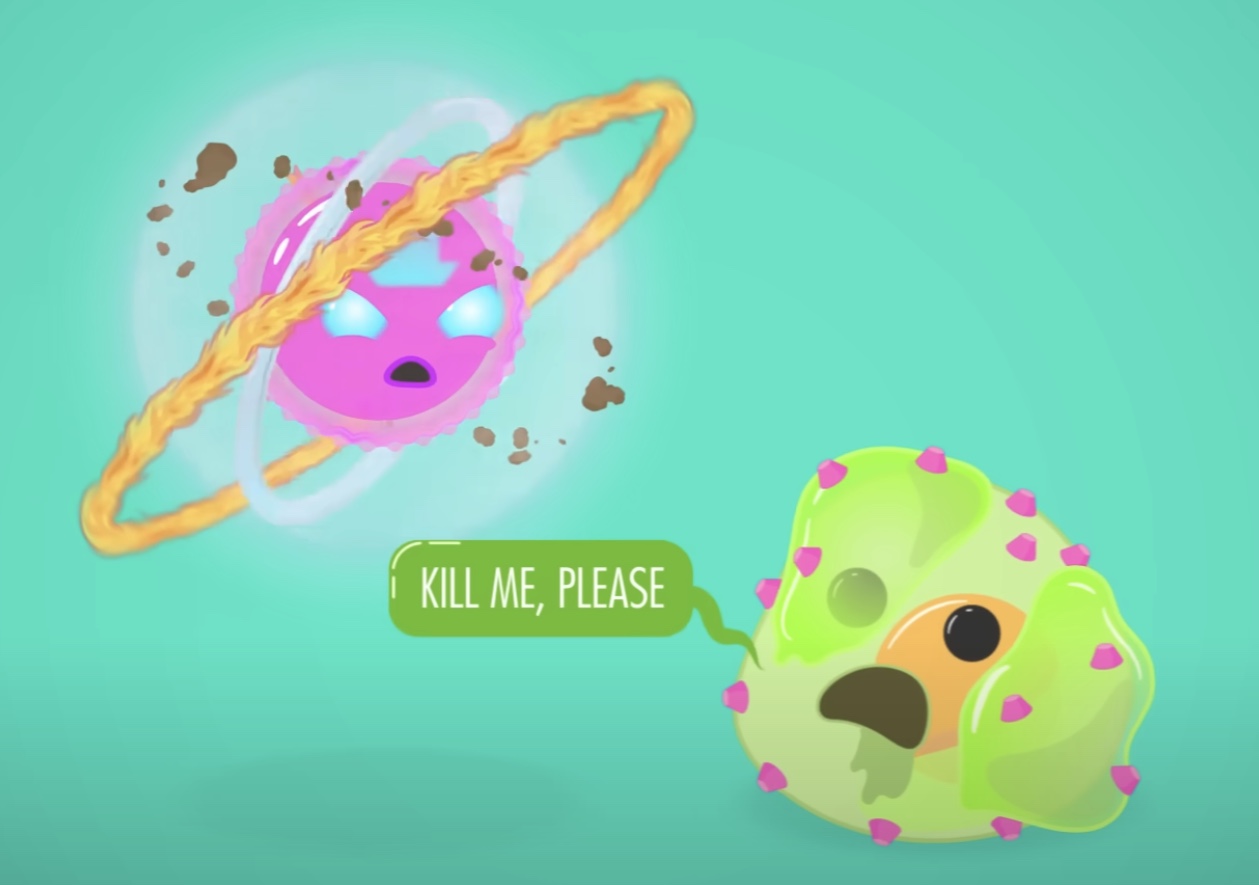
Infected Body Cells
will display ______ antigens
MHC class I ( 1 ) Antigens
Antigen-Presenting Cells
help activate
Helper T Cells
*especially the dendritic cells!
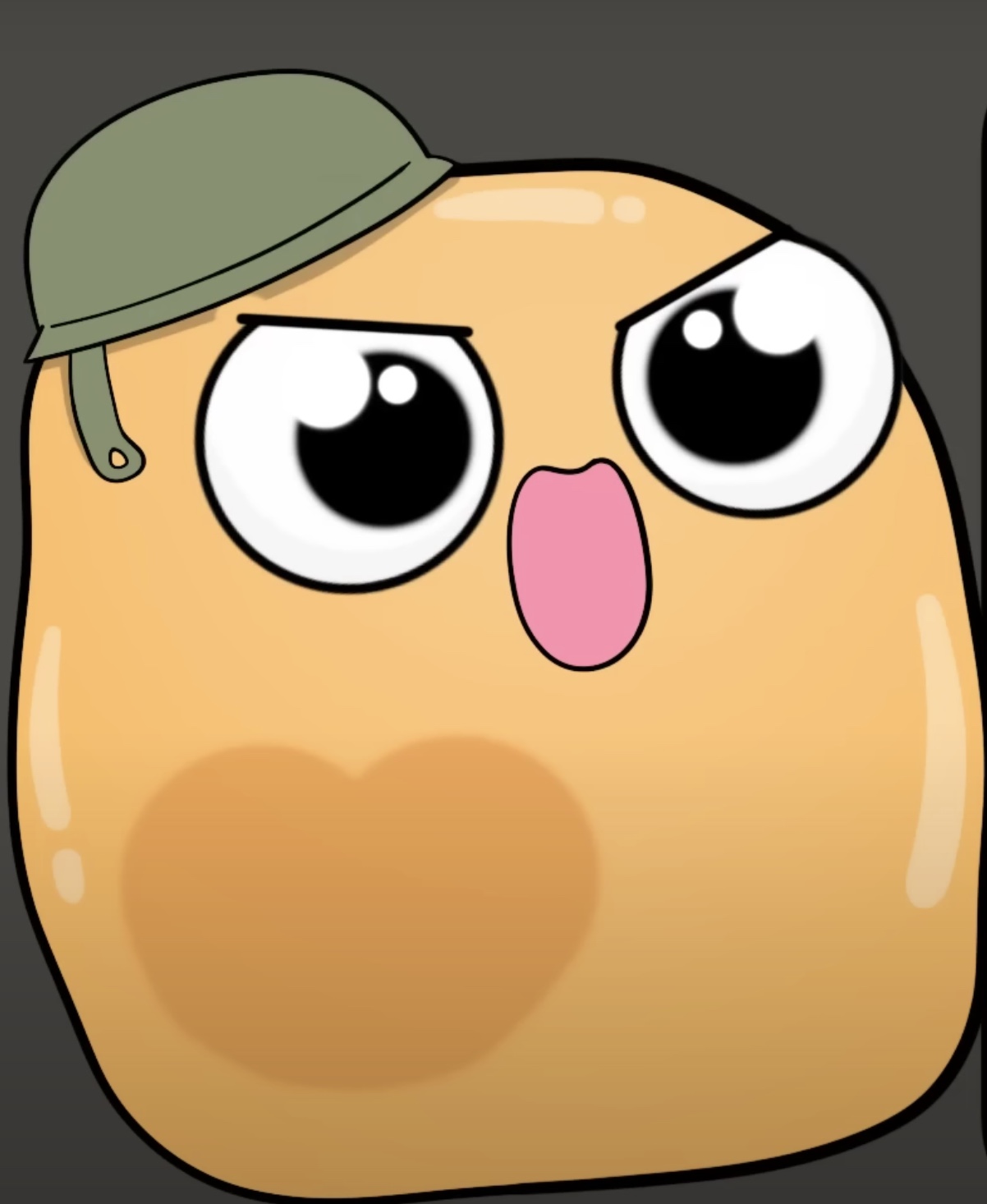
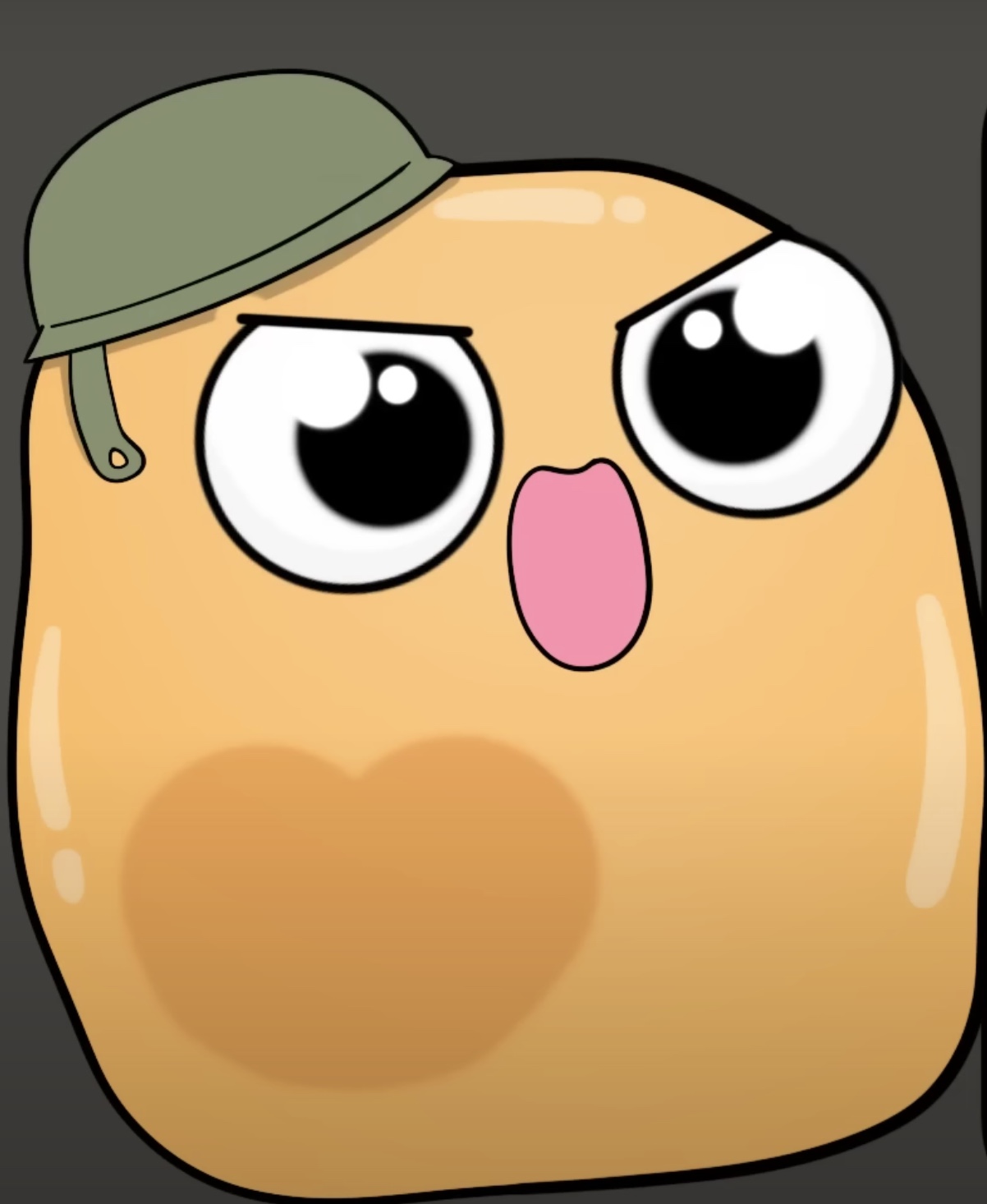
how?
Helper T Cells will ______ the antigen and become activated
Helper T Cells will detect/recognize the antigen and become activated
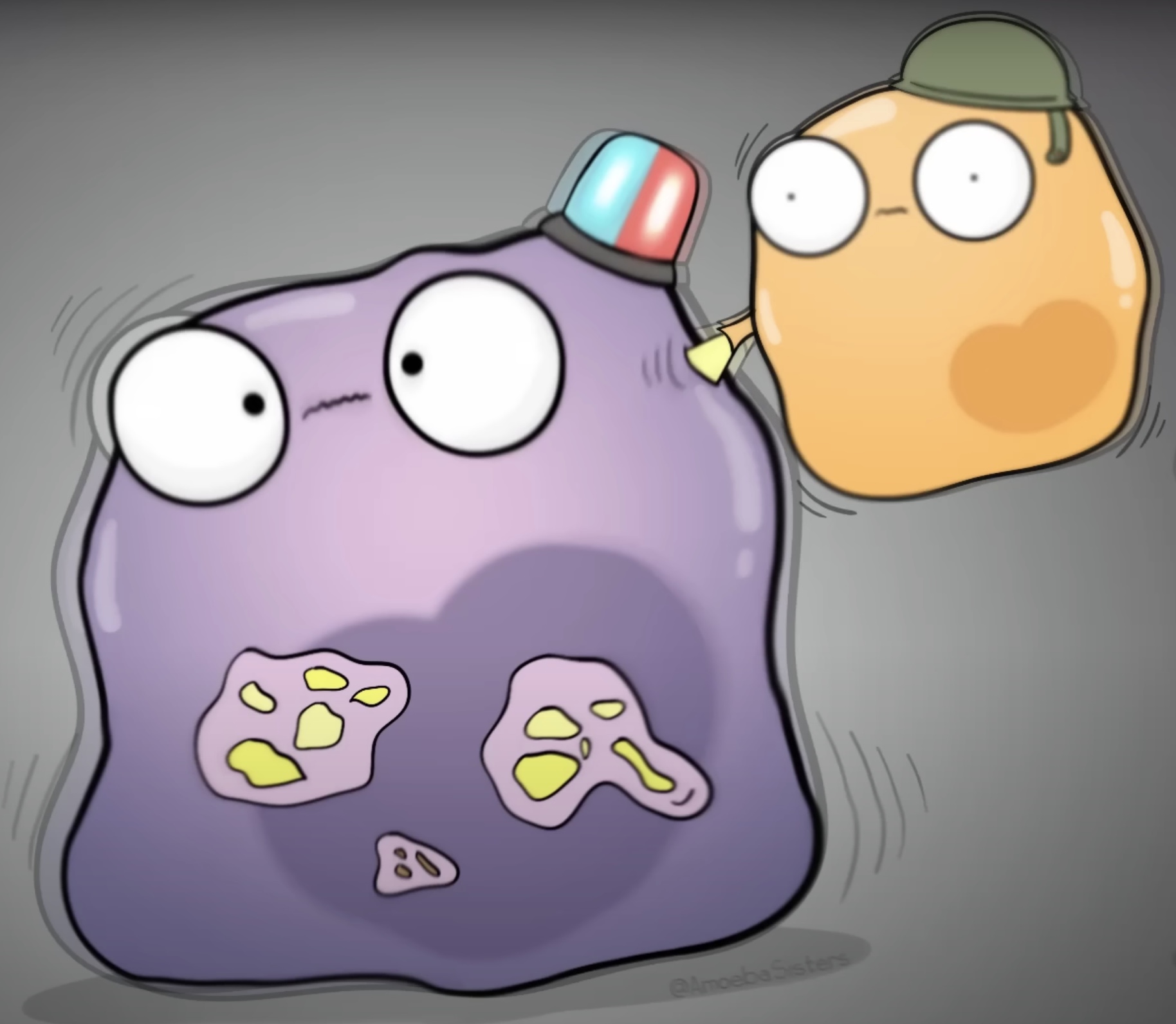
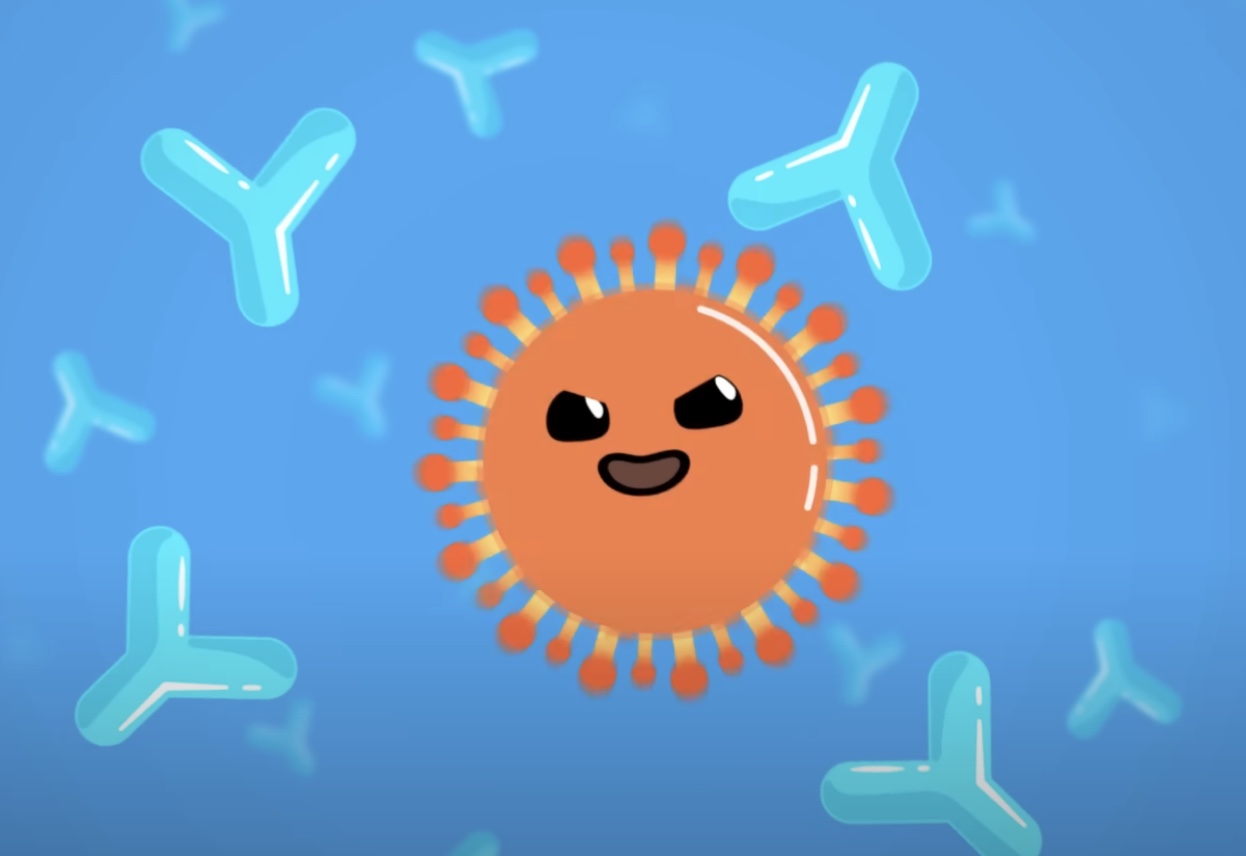
antibodies will _____ the antigen
antibodies will bind to the antigen

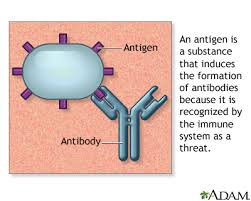
this binding will
block pathogens from doing further infection
tag pathogens
( so phagocytes know what to eat )
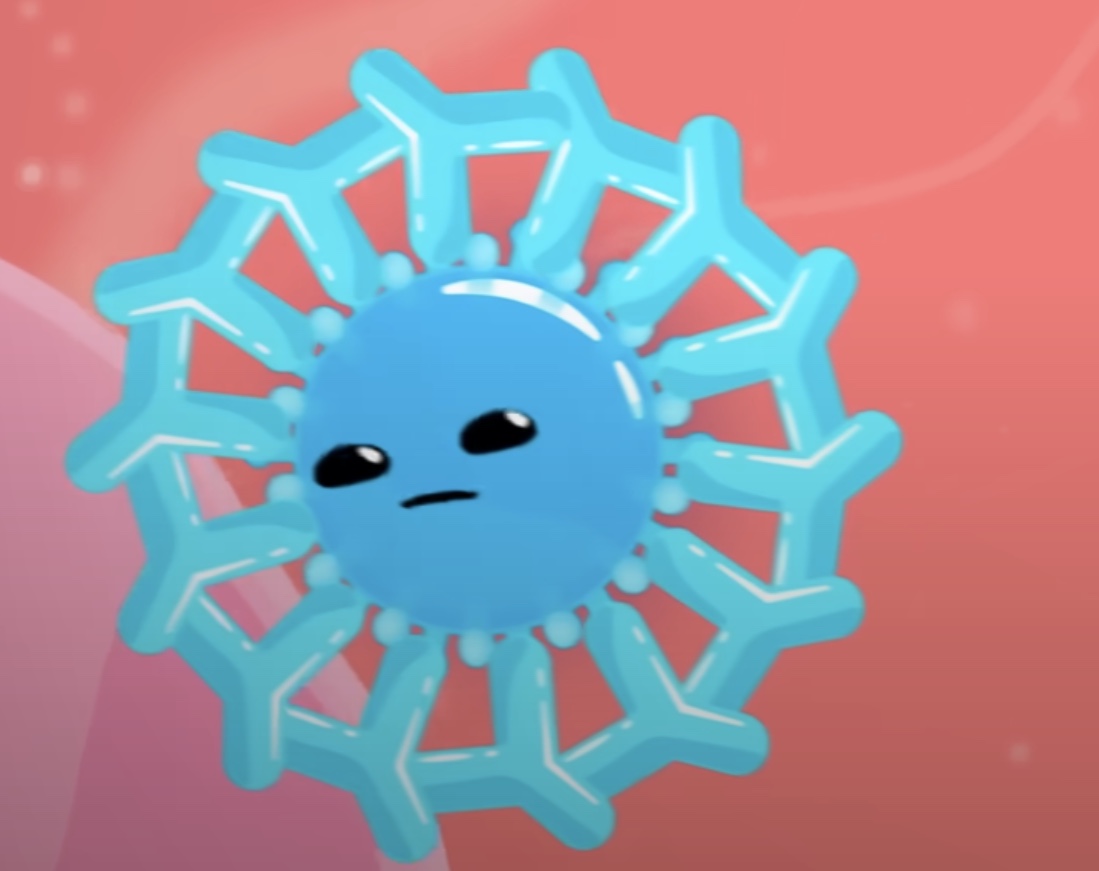
Cytokines
are
chemical messangers
→ communication !!
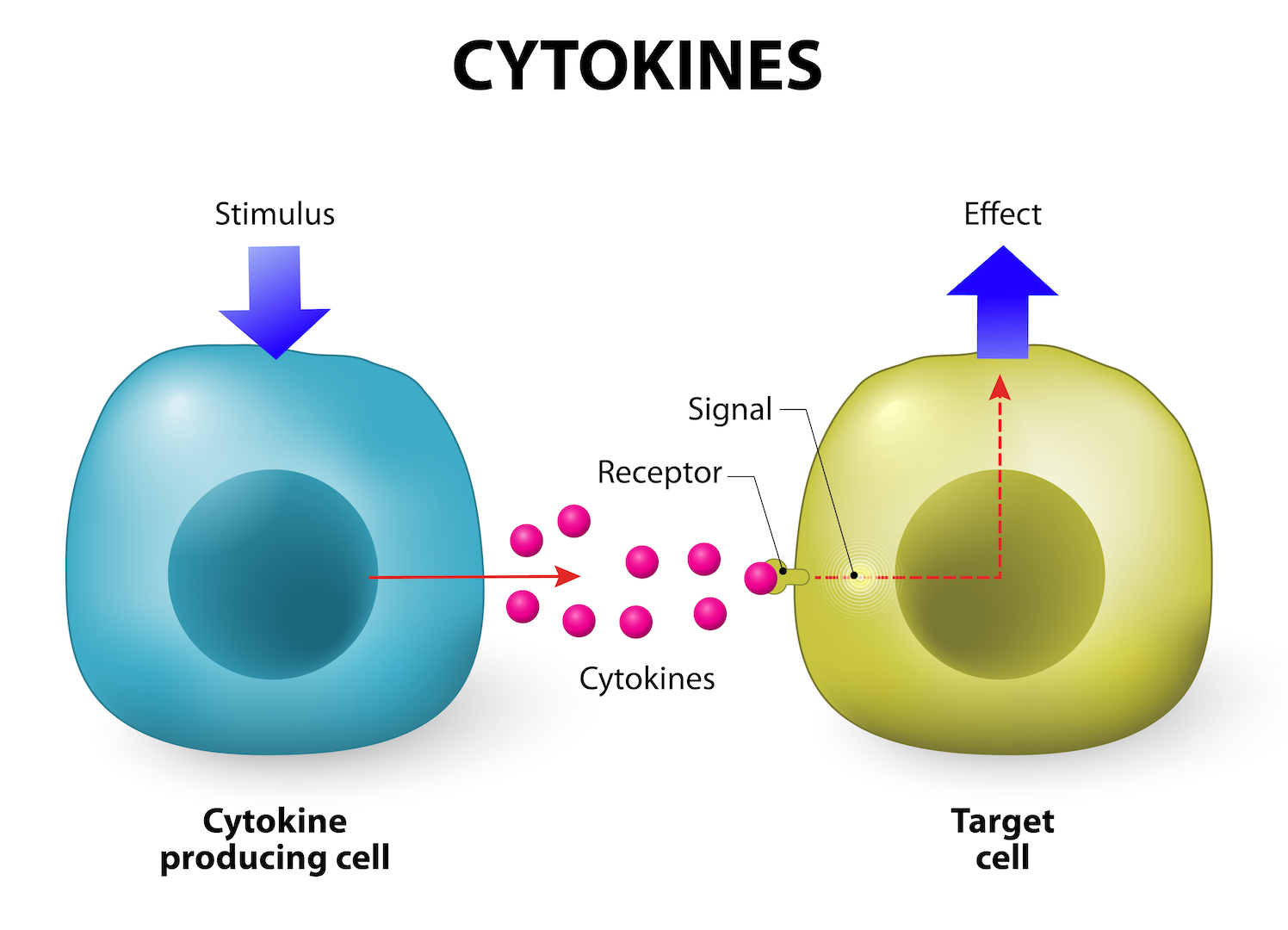
Cytokines
are what allows communication between
B Cells
T Cells
Infected Cells
what helps remember the foreign invaders?
( for if they re-enter in the future)
Memory T-cells
Memory B-cells
Memory Cells
will _______ the _______ foreign invaders
will remember the specific foreign invaders
why?
so body can respond more quickly if the invader ever enters the body again
2 types of immunity?
Passive Immunity
Active Immunity

Passive Immunity
is when someone ______ antibodies that’ve been __________
someone receives antibodies that’ve been made by another person
Passive Immunity
example?
mothers passing antibodies to their child through breast milk
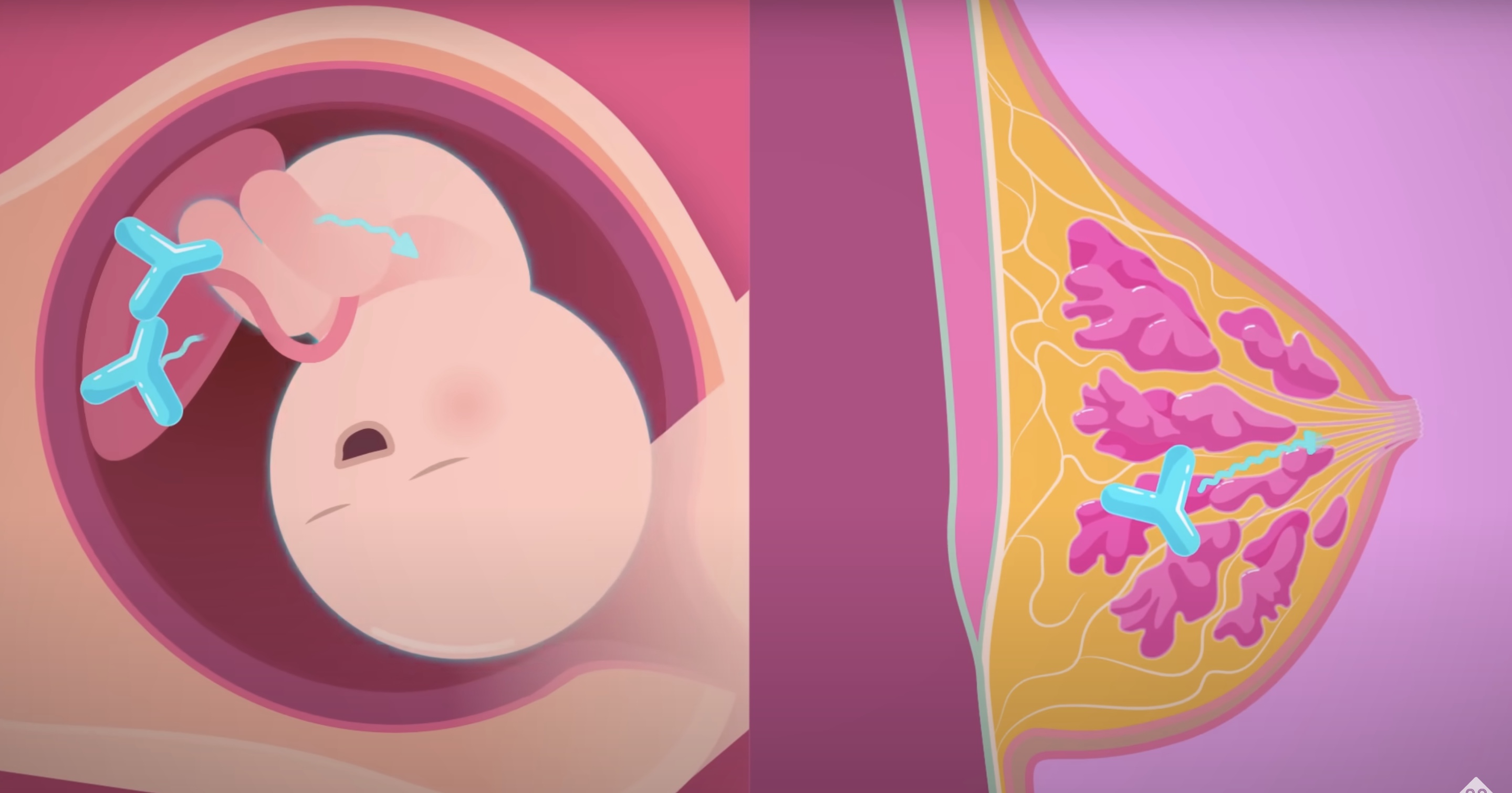
Active Immunity
is when body ____________ in response to ________
produces it’s OWN antibodies in response to infection
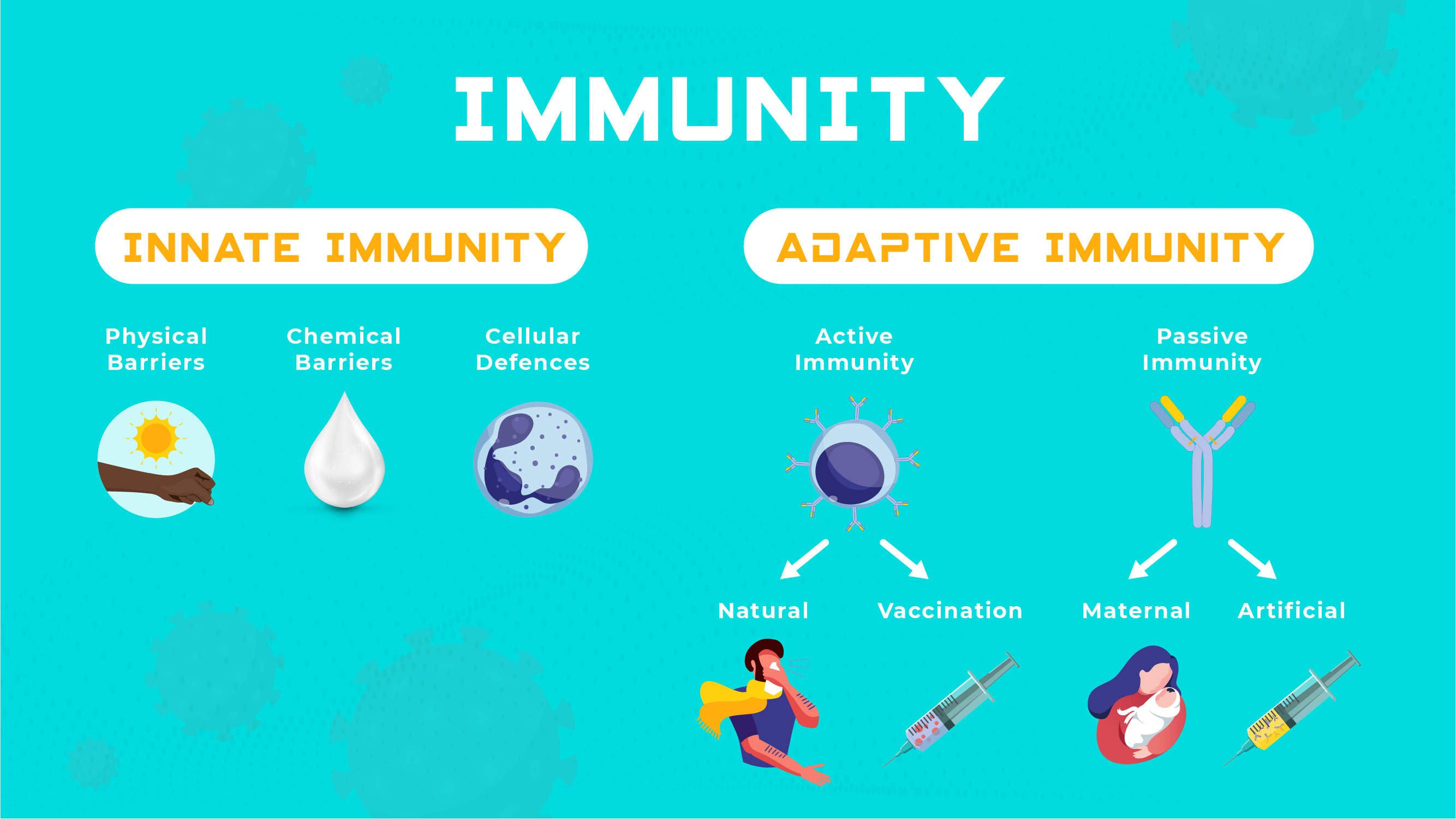
Passive Immunity
Active Immunity
which one lasts longer?
Active Immunity
why?
at some point we’ll stop getting passive immunity
( from mother to child )
passive antibodies won’t survive in different body for long time
passive antibodies doesn’t stimulate the production of memory b and t cells
we’re always getting exposed to new antigens to build antibodies for ( active immunity )